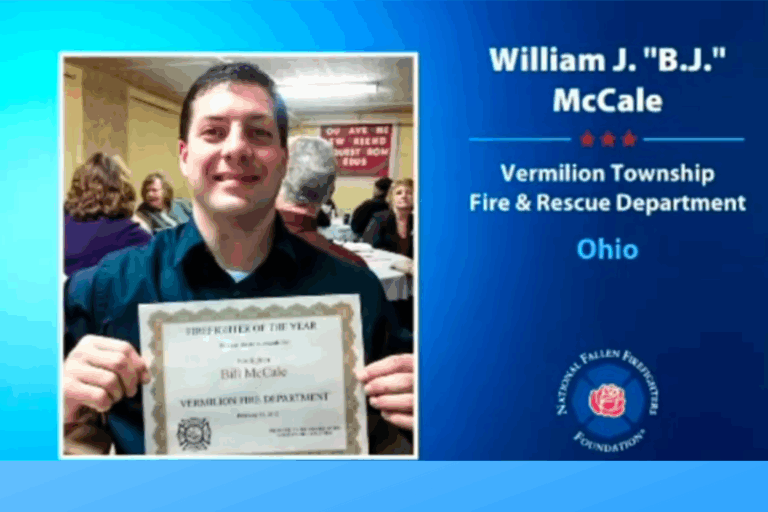
Ordinance Commentary
At Vermilion’s City Council meeting on February 3, 2025, Councilman Drew Werley (Ward 3) introduced Ordinance 2025-7, a proposal for a moratorium on Tax Increment Financing (TIF). While the word “moratorium” often signals a push to halt something immediately, Werley’s move was less about stopping TIF and more about starting a critical conversation—one he believes Vermilion needs before development pressures make it urgent.

What Is TIF and Why Does It Matter?
To fully grasp the significance of Werley’s ordinance, it’s helpful to understand what Tax Increment Financing (TIF) is and why it’s such a contentious tool. TIF is a financing method that allows cities to fund development projects by capturing the future increase in property taxes generated by those developments. In essence, it redirects the future property tax revenue from a project to fund its upfront costs, such as infrastructure improvements or environmental cleanup. This can be an attractive incentive for developers to invest in economically distressed or “blighted” areas.
However, TIF is not without controversy. The key to its use lies in whether the funding is directed to projects that genuinely need it or whether it is used to subsidize projects that would have likely occurred anyway.
Good TIF vs. Bad TIF: Understanding the Debate
The concept of TIF comes with a clear distinction: a good TIF targets projects in truly blighted areas—places with abandoned buildings, environmental contamination, or other conditions that discourage private investment. Think of a dilapidated factory in a struggling neighborhood. A developer may want to revitalize the area by building new housing or businesses, but securing traditional financing is difficult due to the current low property values. In such a case, TIF can help bridge the gap by using the increased tax revenue from the project to finance the upfront costs, ultimately helping the area thrive and creating jobs.
A bad TIF, on the other hand, involves using public funds to subsidize development that would likely happen even without such incentives. For example, a developer looking to build on valuable land in a thriving neighborhood might ask for a TIF to help cover a portion of their costs. In this case, taxpayers are subsidizing something that wouldn’t have required public assistance, diverting funds from essential services and creating a poor return on public investment.
Werley’s approach reflects his belief that TIF should only be applied to projects that will truly benefit from public support—not those that can proceed without it. He is particularly wary of TIF being used in areas that are already economically viable. “I’m just putting it out there… I think I said it several months ago. I will never support a moratorium on anything,” Werley stated. However, he did mention that he is “dead set against a TIF for about anything that [he] can think of,” except for truly blighted properties.
A Proactive Move
Werley’s approach was strategic. By introducing the ordinance now, he ensured that TIF wouldn’t catch the council off guard when it inevitably arises in future projects. Rather than waiting for a TIF request to land in front of the council, Werley set the stage for proactive discussion, ensuring that the council would be better prepared for such decisions in the future. His approach was not about rushing into a decision but about providing a framework for a deeper, more informed conversation on the topic.
When the ordinance was introduced, Council President Steve Herron immediately recommended tabling it, pointing out that TIF is governed by the Ohio Revised Code. “I do not think it’s the city’s job to ban something that’s contemplated by the Ohio Revised Code,” Herron said, suggesting that the state already provides a clear structure for how TIF should be implemented. But Werley, undeterred, pushed for the matter to head to the Legislative Committee, where the issue could be dissected in detail. This would allow for a thorough review and possible modifications to the ordinance, rather than simply accepting or rejecting it outright.
A Divided Vote
After a brief but pointed discussion, the motion to table passed narrowly, 4-3. Voting in favor were Pat West (Ward 1), Greg Drew (Ward 2), Jeff Lucas (Ward 4), and Herron. Opposing the motion were Werley, Brian Holmes (Ward 5), and At-Large Councilman Gary Howell. The vote reflected the council’s split perspective on the use of TIF. Some members believed it could be a useful tool for stimulating development, while others shared Werley’s concerns about its potential misuse.
Werley didn’t back down after the vote. He attempted to have the ordinance formally referred to the Legislative Committee for further consideration. Municipal Clerk Gwen Fisher clarified that no motion was necessary and could place it directly on the committee’s agenda with Werley’s name attached. This step ensures that the discussion continues and that the issue remains at the forefront of future council considerations.
The Bigger Picture: What’s Next for Vermilion?
Though the ordinance was tabled, Werley’s efforts were not about passing legislation that night. His main goal was to ensure that the city would be prepared for the TIF-related decisions that are likely to come in the near future. As Vermilion faces more development, including potential large-scale projects, TIF could become an increasingly common tool for financing those endeavors. However, Werley’s concerns raise the question: Will TIF be used responsibly in Vermilion, or will it be misapplied to projects that don’t require public assistance?
Werley’s foresight ensures that the council will have a better understanding of the potential pitfalls and benefits of TIF when the time comes to make decisions. Whether the moratorium is adopted or not, the discussion is essential to shaping how Vermilion will handle its development and infrastructure in the years ahead.
Comparing to Other Communities
Vermilion is not alone in its debate over TIF. Many cities across Ohio and the U.S. have grappled with how to implement TIF in a way that benefits the public while encouraging growth. For example, in Cleveland, TIF has been used to revitalize distressed neighborhoods, while critics argue that it has been abused to fund projects that might have been built without public funding. The challenge for Vermilion will be determining how TIF can be applied in a way that truly benefits the community, rather than just serving as a developer incentive.
Final Thoughts

Councilman Werley’s initiative to introduce the TIF moratorium is just the beginning of what will likely be an ongoing discussion. Whether the council decides to pass a moratorium or move forward with TIF projects, the decision will have lasting implications for Vermilion’s development landscape. Werley’s approach to the issue—ensuring the council has the tools to make an informed decision—has set the stage for a thoughtful and strategic approach to future development. This proactive move could ultimately shape the city’s growth for years to come.





Thank you Councilman Werley for starting this important conversation with the members of Vermilion City Council so they are better prepared. It definately showed the split in thinking amoung the present council members. The will of the people of Vermilion needs to be heard and considered. Unfortunately, many members of the current City Council have not been listening. So, “We the People,” will need to demand that we are heard!
Well stated… Each TIF has it’s own specific terms. Each use has a different projects. Cities and Township and those affected I. e. School Districts, infrastructure realities, must be considered….
I am advocating for the development of moderately priced rental housing for senior citizens in Vermilion. This is not to be confused with any voucher program. Rather, it is my advocacy for affordable, small housing units of a single bedroom or efficiency that a person living on Social Security alone could manage.
As a representative for Vermilion with Serving Our Seniors, I have a good idea about how there is a looming crisis for units of this type. If a TIF would help encourage a builder to create this type of housing as just a small part of a larger project, I would advocate for that TIF. Feel free to contact me if you have any questions. – Linda Eyerman